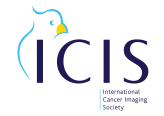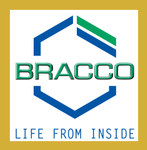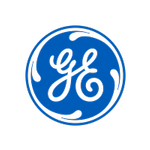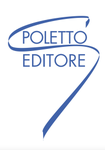Events / Education
International Cancer Imaging Society Meeting and 19th Annual Teaching Course
Mon 07 Oct 2019 Wed 09 Oct 2019 Society
Learning objectives
To improve your knowledge of:
• Cancer diagnosis
• Cancer staging
• Response assessment
• Post-procedural assessment
• Emergency / Side effects / complications of oncologic therapies
• Interventional radiology in oncologic patients
• Structured reporting
• Imaging protocols in cancer imaging
• Differential diagnosis of focal lesions
High quality educational lectures and hands-on workshops
• Refresh your knowledge of cancer imaging and learn about cutting edge developments
• Listen to state of the art multimodality cancer imaging (MRI, CT and PET)
• Improve your knowledge of the mechanism of different drugs in the treatment of cancer
• Bring your knowledge into practice in workstation based teaching in our hands-on workshops
• Focus on interventional radiology in oncology: from diagnosis to treatment
• Experience the role of cancer imaging in multidisciplinary interaction: treatment selection, early response prediction and treatment adaptation
• Learn how big data initiatives are changing the future of cancer imaging: radiogenomics, machine learning, AI
In addition:
• Presentations of cases you would like to read again
• Proffered papers (oral, poster and case presentations)
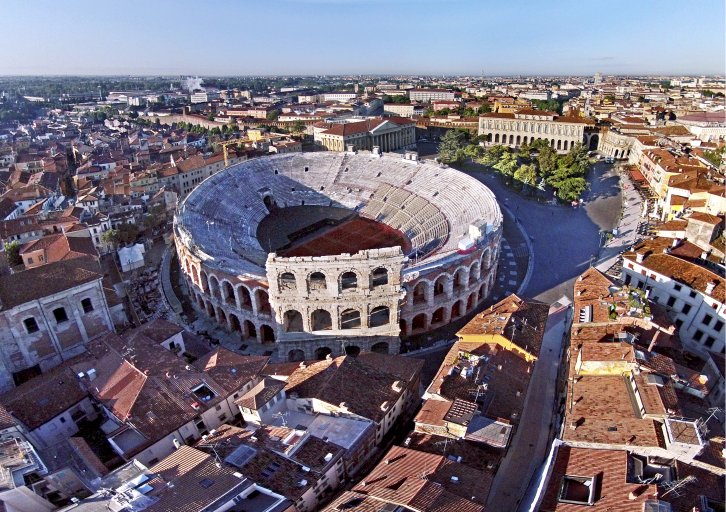
Relevant Documents
Venue: Palazzo della Gran Guardia, Verona, Italy
Date: Monday 7th to Wednesday 9th October 2019
Keynote lectures
• Measuring impact of Imaging (Health Technologic Assessment)
• Beyond artificial intelligence: empathy and communication in radiology. Looking through the patient’s eyes
• Theranostics: Nuclear medicine revisited
Main sessions
• Clinical needs in pancreatic imaging
• Screenings
• Characterisation: Head to toe 1
• Characterisation: Head to toe 2
• Artificial Intelligence in oncological imaging
• Staging head to toe – What surgeons need to know
• Gynaecological cancer
• ICIS Meets SIRM* – HCC: From diagnosis to therapy
• Prostate cancer
• Cases I would like to read again
Break-out sessions
• Structured report
• Percutaneous interventions
• Pitfalls in diagnostic imaging
• Paediatric oncology
• Imaging in the era of precision medicine
Computer hands-on workshops
• LI-RADS for all
• PI-RADS for all
• Lung nodules: Characterisation Bile duct tumours: Preoperative staging
• Whole-Body MRI: Basic
• Breast MRI (Diagnosis and intervention)
• Whole-Body MRI: Intermediate
Scientific paper sessions and poster exhibition
Prizes for the best oral presentations and best posters will be awarded at the course party on Tuesday evening.
HOW TO REGISTER
Online: Click for ONLINE REGISTRATION here to register.
Other info:
Course dinner open to all the delegates at €70 per person on Tuesday 8th October at the Palazzo della Gran Guardia at 19.30. Course dinner open to all faculty for £0, additional guests need to pay €70.
Fellows' AGM attendance Sunday 6th October at the Hotel Accademia from 16.30 to 17.30
Fellows' Dinner on Sunday 6th October 19.30 in the town centre, Verona. €0 (complimentary for fellow + spouse) up to 2 people max. Address is Palazzo Della Gran Guardia, Piazza Bra, 1, 37121 Verona.
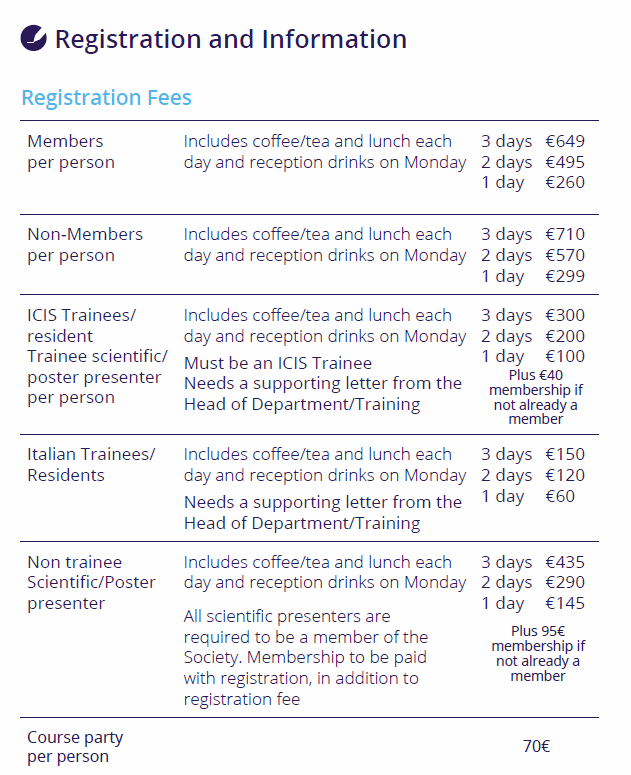
Verona is now the fourth most visited city in Italy, best known for its association with Shakespeare’s star-crossed lovers, Romeo and Juliet. Dating back to the Roman Empire, it is a city bursting with medieval palaces, elegant churches, ancient ruins and winding streets. At the heart of the compact city is a 1st century amphitheatre where the annual summer opera festival takes place. Delicious regional food and wine can be sampled at every turn and it is just a small distance from the gorgeous Lake Garda.
HOW TO REACH VERONA
Arriving by Air
Verona-Villafranca (or Valerio Catullo) Airport is 12km from the city centre. ATV provides a shuttle bus service to the train station (€6, 15-minute journey, every 20 minutes from 6.30am to 11.30pm). You can also arrive by taxi. Ranks are located outside the arrival hall and a trip costs about €25 and takes 15/20 minutes. Flights arrive from all over Italy and major European destinations.
Verona can also be reached by arriving into Milano Malpensa Airport with journey time approximately 2 hours by train.
Verona can also be reached by arriving into Venice Marco Polo Airport with the journey time approximately 2 hours by train.
Verona can also be reached by arriving into Venice Treviso Airport with the journey time approximately 2 hours by train.
Arriving by Train
Verona Porta Nuova station is a major stop on the Italian rail network with direct services to many Italian towns and cities. There are also direct international services to Austria, Germany and France. For timetables and to buy tickets visit www.trenitalia.com
Venice 70 minutes to 2¼ hours
Padua 40 to 80 minutes
Vicenza 25 to 55 minutes
Milan 1¼ to two hours
Arriving by Bus
The main intercity bus station is in front of the train station in the Porta Nuova area. Buses run to Padua, Vicenza and Venice. ATV city buses 11, 12 and 13 (bus 92 or 93 on Sundays and holidays) connect the train station with Piazza Brà. Buy tickets from newsagents, tobacconists, ticket machines or the ATV office within the train station before you board the bus (tickets valid for 90 minutes, €1.30).
Useful information
Banks
In the city centre there are several banks open from 8.30 am to 12.30 am and from 14.30 to 16.00 approximately. There are many ATMs 24 hours a day - 7 days a week.
Opening hours
Offices: Monday - Friday 9.00 - 13.00 and 14.00 - 18.30
Shops: Monday 15.00 - 19.30, Tuesday - Saturday 9.30 - 19.30 (some shops open all day from 9.30 to 19.30)
Supermarkets: Monday - Friday 8.30 - 12.30 and 15.30 - 19.30
In the city centre, supermarkets usually stay open from 8.30 to 19.30 or later.
Tipping
Service is always included in the price in all restaurants, bars, taxis etc. Tips are happily accepted but it is not necessary.
Verona Card
Available from tourist offices, attractions and kiosks, the wonderful Verona Card entitles you to free city bus travel as well as free or reduced entry to most tourist sites. Two versions are available: €18 for 24 hours and €22 for 48 hours.
Please use the links below to search for available accommodation. Special rates have been negotiated by the Verona bureau.
How to search
SEARCH - DESTINATION
Choose Verona
Choose Gran Guardia Palace
There are no properties under 100 m. The closest hotels are up to 250 m
Should you have any problems or queries please contact:
By phone +39-045-8009844
In Italian
https://reservation.veronabooking.com/cav-congressiallotment/it/accommodation/search
In English
https://reservation.veronabooking.com/cav-congressiallotment/en/accommodation/search
We recommend you book your accommodation as soon as possible to ensure the best rates.
Veronabooking.com - Best Price for International Cancer Imaging Society Meeting and 19th Annual Teaching Course Verona 2019- FOR 40 YEARS WE GUARANTEE THE BEST PRICE!
If you have found your booking for the same accommodation, for the same room, for the same dates and with the same cancellation conditions, at a lower price on other portals within 24 hours from the booking date send us the link to the other offer and we will refund the difference.
If you haven't booked yet and found a lower price on another we site, let us have the link and we'll apply that price, GUARANTEED!
The main tourist office is located in Piazza Bra and is a good central point to start your sightseeing. It is open 10am-6pm, Monday-Saturday and 10am-3pm Sunday.
+ 045 806 8680; www.tourism.verona.it/en
Located in Piazza Bra, the Arena is perhaps the most famous site of the city. This Roman Amphitheatre was built 50 years before Rome’s Coliseum. Opera season runs from June – September but a visit is still an essential part of your stay to soak in the atmosphere of a Roman Arena still in use today. Open Tuesday-Sunday, 8.30am-7.30pm; Monday from 1.30pm.
+39 045 800 5151; arena.it; €10 or free with Verona card
On the Northern side of the Piazza, there is the famous Liston, a wonderful spot for an evening ‘passegiata’ or stroll. Via Mazzini, with its designer shops, can be found at the end of the Liston. This street ends at Via Cappello, head to number 23 where you will find Juliet’s House (Via Cappello 23) which dates back to the 12th Century and is thought to have once belonged to the Capuleti family. A balcony was added in the 20th century, seemingly in an attempt to strengthen the connection to Romeo and Juliet. It is open Tuesday-Sunday, 8.30am-7.30pm and Monday from 1.30pm.
+045 803 4303 www.tourism.verona.it/en/enjoy-verona/art-and-culture/monuments-and-sights/juliet-s-house €6 or free with Verona Card
A stone’s throw away, Piazza delle Erbe was once the Roman Forum and is the original centre of Verona. Its name comes from its time as a vegetable market in the 15th century. During the day, a market sells produce and at aperitivo hour, the piazza’s atmospheric café and bars are full to the brim. Leave the square via the Arco della Costa, with its hanging whale rib (They say a bone will fall on the first person to pass under it who has never told a lie) to marvel at at the Arche Scaligeri, among Italy's most elaborate gothic funerary monuments.
The Basilica di San Zeno Maggiore (19), on Piazza San Zeno, is named after Verona’s patron saint, who is buried here, and has foundations that date back to the 9th century. The church opens for visitors from 12.30pm until 5pm or 6pm according to the season
+ 045 800 6120, basilicasanzeno.it
Verona's most convenient and famous view is from the Torre dei Lamberti, just off Piazza delle Erbe, but there are other options. You can also enjoy a lovely panorama and one of Italy's finest Renaissance gardens at Giardino Giusti or take the walk up to Castel San Pietro; from the piazzale where you can see the city skyline at no cost!
Torre dei Lamberti, Via della Costa 1, +39 045 927 3027; Giardino Giusti, Via Giardino Giusti 2, +39 045 803 4029
Where to take an Aperitivo
In true keeping with Italian customs, do not forget to take an evening aperitivo! A favourite tipple is Aperol spritz, or a glass of chilled Soave wine. One of the finest spots is Caffé Rialto at Via Diaz 2 (+39 045 8012845; grupporialto.it) where you can sit under the arches of the Porta Borsari and enjoy light snack with your drink.
Where to eat
Al Pompiere, located a short distance from Juliet’s House, is a gorgeous trattoria where you can sample specialty meats and traditional pasta and risottos. There are also 300 wines to choose from.
Vicolo Regina d'Ungheria 5, +39 045 803 0537, alpompiere.tv, main courses from €10
Just around the corner from the Arena, you will find Ristorante La Fontanina. A Michelin starred osteria which has been serving the locals for more than 200 years and delivers a variety of traditional dishes with a twist
Portichetti Fontanelle 3, +39 045 913 305, ristorantelafontanina.com, main courses from €16
Locanda 4 Cuochi is a relatively new addition to Verona’s dining scene where you can sit and watch the cooks in the open kitchen.
Via Alberto Mario 12, +39 045 80 30 311, locanda4cuochi.it, Main courses from €11.
Bottega del Vino is a traditional pre-opera choice for locals and dates back a century.
Via Scudo di Francia 3, +39 045 8004535, bottegavini.it Main courses start at €16
Day Excursions
Lake Garda
Lake Garda (Lago di Garda) is Italy’s biggest lake with gorgeous towns and villages dotted along its shores. Peschiera del Garda, Desenzano del Garda, Sirmione, Lazise, Bardolino, Garda, Torri del Benaco; Monselice, Torbole and Riva del Garda are just some of the towns on Lake Garda which you can reach with ease for a fantastic day trip from Verona. They’re perfect for lake views, nature hikes, boat trips and water sports.
www.lagodigarda.it
www.visitgarda.com
Medieval Walled Towns
There is a collection of gorgeous medieval walled towns within easy reach of Verona. Soave with its cobbled streets and pretty houses, is perhaps most famous for its white wine. There is a great hike to the top of Mount Tenda where you can see the medieval castle and then walk through olive groves and vineyards. Castelfranco Veneto has an almost intact defensive wall which circles the town’s historical centre. The views from the Torre Civica are worth the steep steps to reach the tower’s top. Cittadella is the home to ‘Europe’s best medieval parapet walkway’ where you can circle the town by walking on its medieval wall. Monselice is a gorgeous medieval town where the Venetian noblemen used to holiday every summer. It has a stunning castle, which can be visited as part of a guided visit.
Venice
Venice needs no introduction and while there is enough to see and do to fill a year, it is still worth dedicating a day to this unique city. On arrival, jump on the vaporetto line 1 down the Grand Canal to St. Mark’s Square. Along the way you will experience such stunning buildings and structures as Ca Pesaro, Ca d’Oro, Rialto Bridge, Ca Rezzonico, Accademia Bridge, Gallerie dell’Accademia, the church Santa Maria della Salute and the St. Mark’s Basin with St. Mark’s Square and the Doge’s Palace on one side and the islet of San Giorgio Maggiore on the other. Take the time to visit the Doge’s Palace to get a feel for Venice as the political super power it was during its prime. St. Mark’s Basilica and its adjacent bell tower is also worth a visit. Explore Rialto fruit and vegetable market and Rialto fish market and take a traghetto across the Grand Canal. Don’t miss the Accademia Gallery for one of the best collections of Old Masters paintings in Italy. To fully take advantage of the splendour of the city, go by foot and lose yourself in the atmospheric back streets. If you have time, complete your day with an early evening cicchetti (Venetia tapas) tour through the bacari bars around the Rialto Market area. Venice, especially off season, is pure delight. Venice can be reached by train from Verona in approximately 1.5 hours by either the Frecciarossa or Regionale Veloce trains. Make sure you get off at is Venezia Santa Lucia, not Venezia Mestre as this is the train station of mainland Venice.
Bologna
Bologna can be reached in as little as 50 minutes by train from Verona and is compact enough to do in one action packed day. Bologna, the capital of the Emilia-Romagna region, is world famous for its food, including fresh pasta, mortadella and of course ragù (known commonly as Bolognese sauce outside of Italy) but it also has many wonderful sights to take in. Some of the best include Archiginnasio (the first permanent seat of the University of Bologna, the oldest University in the world still in continuous operation today), Asinelli and Garisenda towers, Basilica of Santo Stefano, Neptune’s Fountain, Quadrilatero (the city’s medieval market), Piazza Maggiore and FICO Eataly World – the largest food park in the world.
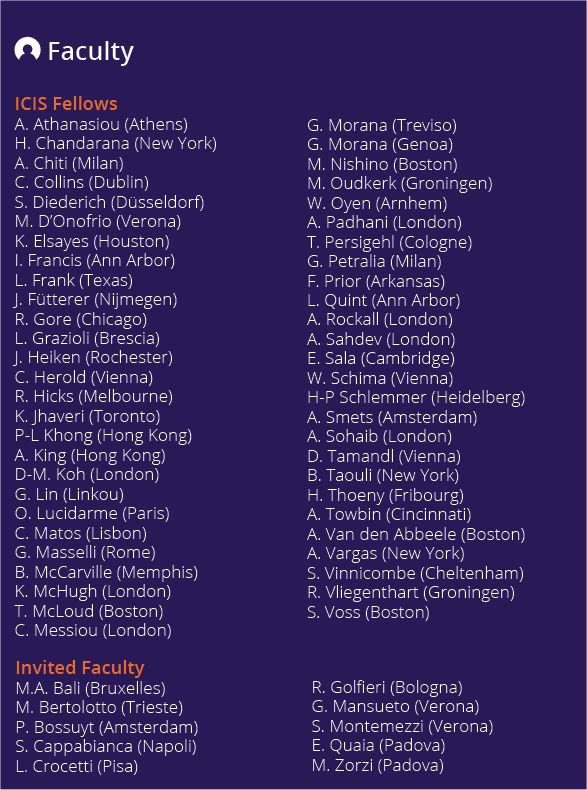
Royal College of Radiologists – delegates will receive 17 credits in total for the three-day course. Monday 6.5 credits, Tuesday 6.5 credits, Wednesday 4 credits.
European Accreditation Council for Continuing Medical Education (EACCME) have awarded this event 16 credits: Monday 6 credits, Tuesday 6 credits, Wednesday 4 credits.
American delegates can have their EACCME European CME Credits converted to AMA PRA Category 1 Credit™ by applying to the AMA.
Download the 1 page from here:- https://www.ama-assn.org/sites/default/files/media-browser/public/cme/eaccme-application.pdf
Send the completed form to the AMA together with the EACCME certificate* and the non-refundable processing fee (AMA members $30 and non AMA members $75). AMA certificates will be emailed within 3 business weeks.
* The EACCME certificate will be automatically emailed to you once you have completed the ICIS course daily electronic surveys.
Please visit this link for further information https://www.ama-assn.org/education/uemseaccme-cme-credit-recognition
» Guidelines » Examples » Download Abstract Guidelines
General Rules
Abstracts that do not adhere to the following important points will be rejected:
> The title should not exceed 15 words. The title should be in bold, sentence case with no full stop at the end and no underlining.
> The abstract should not exceed 250 words.
> Please use authors’ initials and surnames only. No full stop at the end. Underline the name of the corresponding author. A comma should separate author names. Where authors are from a number of different institutions, the appropriate institution number from the affiliation list should be given as a superscript number immediately after each author's name, e.g.: John Smith1, Susan Jones1, Bill Fisher2. An asterisk * should be used to link the corresponding author with their email address
> Affiliations should include institute, town and country. Where there are multiple affiliations, each should be listed as a separate paragraph. Each institute should appear in the order used against the author names (see above paragraph) and show the appropriate superscript number, e.g.:
1 University, Town, State, USA
2 University, Town, UK
2 Company, Town, Country
> Qualifications should be omitted.
> Do not include references, tables or figures.
> Please do not use block capitals.
Main text
> In structured abstracts, paragraph headings should be typed in bold with no colon at the end. Do not use the heading ‘Abstract’. Each heading should be in a separate paragraph.
Aim
Followed by regular text, on a new line and in the same format as shown above for main text.
Materials & Methods
Results
Conclusions
Consent to publish If the abstract contains details relating to individual participants (for example a case report), written informed consent for the publication of these details must be obtained from the participants and a statement to this effect should appear at the end of the abstract. Our guidelines for consent statements can be found here: http://www.biomedcentral.com/about/editorialpolicies#Ethics. If the patient is deceased consent for publication should be obtained from the next of kin and if the patient is under 16 consent should be obtained from the parent or guardian.
Please find examples at the bottom of the page.
You may choose among four different abstract types:
> Oral Scientific Presentation
> Oral Case Based Presentation
> Poster Scientific Presentation
> Poster Educational Presentation
Oral Scientific Presentation
The abstract should be separated into “Aim”, “Methods”, “Results” and “Conclusion”. The abstract limit is 250 words. Abstracts should not include promissory notes such as “We will provide additional data during our presentation.” Authors of accepted oral presentations will be invited for a presentation within the Scientific Paper Sessions. Presentation time will be 8 minutes with 2 minutes for Q&A (depending on the final program).
Oral Case Based Presentation
The abstract should have an image and three teaching points. The abstract limit is 250 words. Abstracts should not include promissory notes such as “We will provide additional data during our presentation.” Authors of accepted oral case based presentations will be invited for a presentation within the Scientific Paper Sessions. Presentation time will be 8 minutes with 2 minutes for Q&A (depending on the final program).
Poster Scientific Presentation
The abstract should be separated into “Aim”, “Methods”, “Results” and “Conclusion”. The abstract limit is 250 words.
Poster Educational Presentation
The abstract should be separated into “Learning Objectives”, “Content Organisation”, and “Conclusion”. The abstract limit is 250 words.
Proceedings of the 19th International Cancer Imaging
Abstracts selected for presentation will be published in the Proceedings of the 19th International Cancer Imaging, given to all delegates and faculty. A downloadable version of your submission will be made available to our membership on the members only area of our website, and be available on the Cancer Imaging open access website. Authors of selected abstracts will be notified in July 2019.
It will be obligatory for all scientific presenters to be members of ICIS at the time of presentation. The annual membership fee of €95 will be added to the scientific presenters’ fee at registration if current membership is not in place. Please note that we have a discounted trainee membership at €40 and a much reduced trainee registration fee for the course. Membership will run for one year from date of registration; all standard member benefits will apply.
Financial help will be available for junior proffered presenters. This will be decided on application and on a case-by-case basis.
Applicants for financial aid please email [email protected] for further information.
Queries may be addressed to the ICIS Secretariat
Tel: +44 (0) 7956 814964 or Email: [email protected]
Submission deadline: Tuesday 4th June 2019
EXAMPLE – ORAL CASE BASED PRESENTATION
Diagnosis: Advanced Cervix Cancer
Sala E.
Memorial Sloan Kettering Cancer Center, New York, USA
Images:
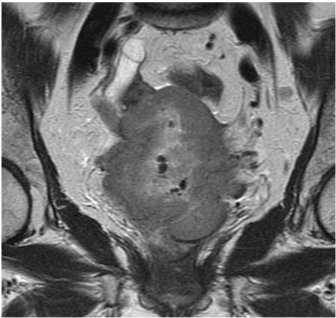
Teaching/Discussion points:
> Discuss the role of MRI in treatment slection and planning of patients with cervical cancer
> Describe MRI Features of parametrial and pelvic sidewall invasion
> Highlight potential pitfalls
EXAMPLE - POSTER EDUCATIONAL
Chemotherapy induced cardiomyopathy: an overview, imaging features, and future prospective
Firstname A Lastname1*, Firstname B Lastname2, Firstname C Lastname3
1University, Town, State, USA
2University, Town, UK
3Company, Town, Canada
*Email address of corresponding author if being included
Learning objectives:
To review the spectrum of imaging findings of chemotherapy- induced cardiomyopathy in correlation with most common cytotoxic drugs and regimens.
Content organisation:
Cardio toxic effect of chemotherapy is a well-recognized problem in cancer patients. Cardio toxicity depends on multiple predisposing factors, specific components of the chemotherapy regimen, length of treatment, and dosage.
We will present the spectrum of most common cardiotoxic chemotherapy agents and their combinations, specific effects on the myocardium, and imaging features of cardiomyopathies induced by chemotherapy.
We will review pathophysiology of chemotherapy induced cardiomyopathy including:
- Dose dependent cardiomyopathy
- Predisposing conditions –diabetes, presence of coronary artery disease, age.
- Potential reversibility
We will discuss imaging characteristics of chemotherapy induced cardiomyopathy
- Imaging modalities ( Echocardiography, Cardiac MR, and MUGA)
- Importance of monitoring cardiac function during and after treatment
- Distribution of late Gadolinium enhancement (LGE)
- Emerging technologies for early diagnosis of cardiomyopathy in cancer patients
Conclusions:
Chemotherapy induced cardiomyopathy is a common problem among cancer patients, increasing long term morbidity and mortality and often leading to disability. Patients receiving chemotherapy treatment, particularly cardio toxic agents, should be routinely assessed for cardiac function to diagnose cardiomyopathy during the early phase of treatment and to prevent development of irreversible heart failure.
EXAMPLE POSTER SCIENTIFIC
The value of 68Ga-PSMA enhanced MR-PET in patients with biochemical recurrent prostate cancer
Firstname A Lastname1*, Firstname B Lastname2, Firstname C Lastname3
1University, Town, State, USA
2University, Town, UK
3Company, Town, Canada
*Email address of corresponding author if being included
Aim: In patients with prostate Cancer increased levels of PSMA can be measured. Recently a new tracer, 68Ga-PSMA, was developed as a specific marker for hybrid imaging (PET/CT, MR-PET). In this study we evaluated the accuracy of 68Ga-PSMA in patients with rising PSA after radical prosatectomy, so called „biochemical recurrent prostate cancer“ (BRPC).
Materials and Methods: A total of 322 patients with BRPC underwent a MR-PET examination (Siemens Biograph mMR) after injection of about 150 mBq 68Ga-PSMA. Images were evaluated in cosensus by one experienced nuclear medicine physician and one radiologist. Pelvine lymphnode dissection was performed in most of the patients according to a predefined template with 8 fields. Lymphnode involvement was evaluated according to a 5 point scale with a patient- and a field-based analysis. These findings were startified according to PSA-values.
Results: Four patients were excluded from the study for different reasons. Sensitivity for detction of recurrence was 95.7 % for PSA-values ≥ 2ng/ml, 81.4 % for PSA-values of 1-2 ng/ml, 76% for PSA-values 0.5-1 ng/ml, and 51% for PSA values ≤ 0.5 ng/ml. In comparison to the MR-images alone MR-PET was of superior diagnostic value.
Conclusions: MR-PET using 68Ga-PSMA is a sensitive and highly accurate technique for the diagnosis of biochemical reccurence of prostate cancer after radical prostatectomy. It yields high diagnostic performance at relatively low PCA-values.
